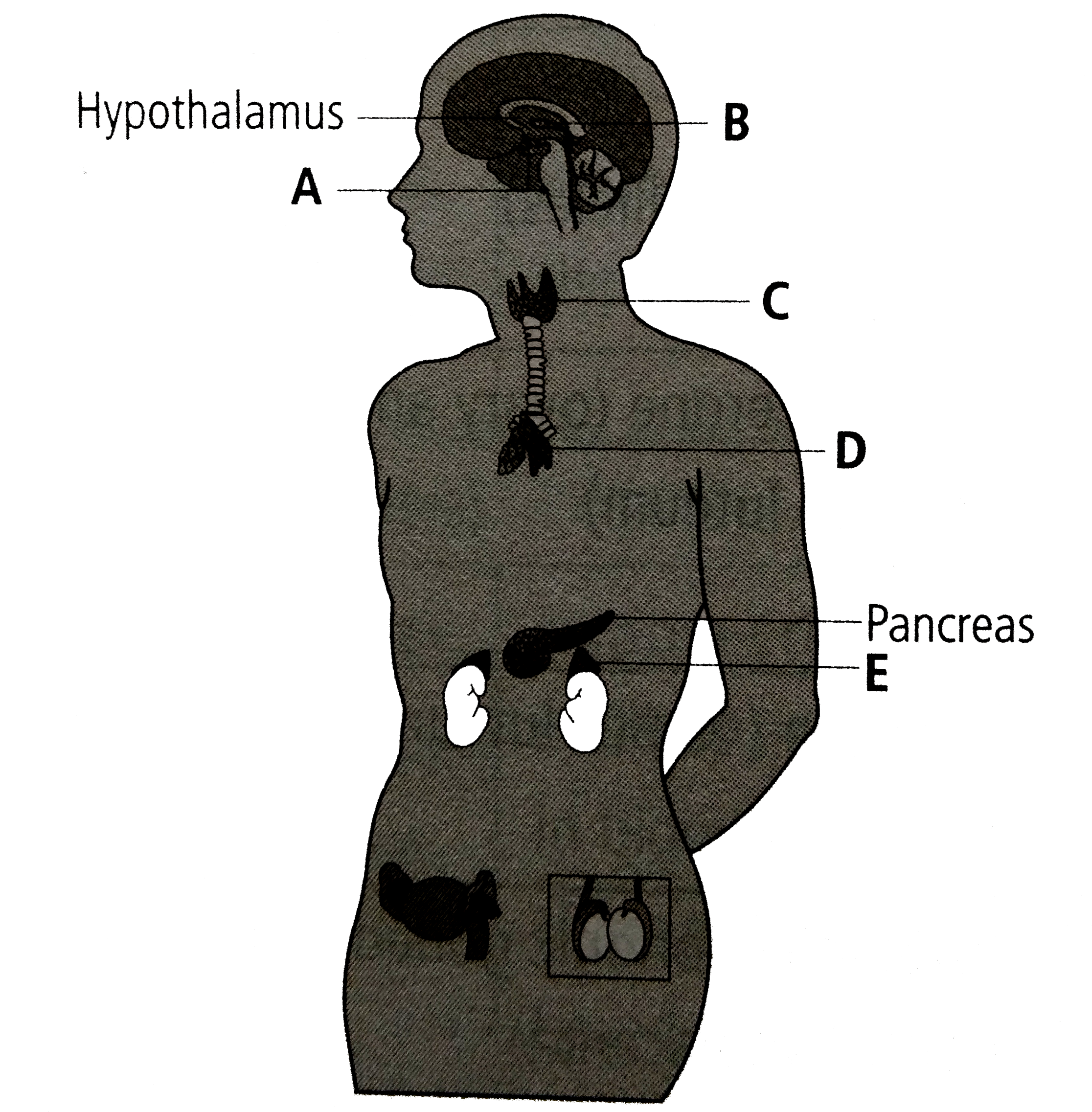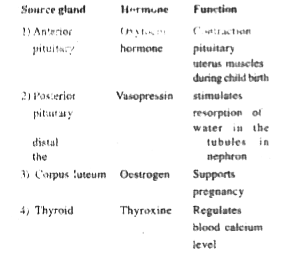Read the following statements about the parathyroid gland and identify the true and false ones. Select the correct option after referring to the given table.
I. Human beings have a pair of parathyroid glands, situated in each lobe of the thyroid gland.
II. The secretion of PTH is regulated by the levels of circulating calcium ions.
III. PTH is a hypocalcemic hormone.
PTH plays a major role in maintaining calcium balance in the body along with TCT.
I - True, II - False, III - True, IV - False
I - True, II - True, III - False, IV - True
I - False, II - False, III - True, IV - False
I - False, II - True, III - False, IV -True
The correct Answer is:D
To solve the question regarding the parathyroid gland, we will evaluate each statement one by one to determine whether it is true or false.
1. Statement I: "Human beings have a pair of parathyroid glands, situated in each lobe of the thyroid gland."
- Evaluation: This statement is False. The parathyroid glands are typically located behind the thyroid gland, not in each lobe of the thyroid. They are usually four small glands that are situated on the posterior surface of the thyroid gland.
2. Statement II: "The secretion of PTH is regulated by the levels of circulating calcium ions."
- Evaluation: This statement is True. The secretion of parathyroid hormone (PTH) is indeed regulated by the levels of calcium ions in the blood. When calcium levels drop, PTH is secreted to increase calcium levels.
3. Statement III: "PTH is a hypocalcemic hormone."
- Evaluation: This statement is False. PTH is actually a hypercalcemic hormone, meaning it increases calcium levels in the blood, not decreases them.
4. Statement IV: "PTH plays a major role in maintaining calcium balance in the body along with TCT."
- Evaluation: This statement is True. PTH (parathyroid hormone) and TCT (thyrocalcitonin, also known as calcitonin) work together to maintain calcium balance in the body, although they have opposite effects on calcium levels.
Conclusion:
Based on the evaluations:
- Statement I: False
- Statement II: True
- Statement III: False
- Statement IV: True
Thus, the correct option is that the first statement is false, the second is true, the third is false, and the fourth is true.
Final Answer:
The correct option is: False, True, False, True.
---
- Evaluation: This statement is False. The parathyroid glands are typically located behind the thyroid gland, not in each lobe of the thyroid. They are usually four small glands that are situated on the posterior surface of the thyroid gland.
- Evaluation: This statement is True. The secretion of parathyroid hormone (PTH) is indeed regulated by the levels of calcium ions in the blood. When calcium levels drop, PTH is secreted to increase calcium levels.
- Evaluation: This statement is False. PTH is actually a hypercalcemic hormone, meaning it increases calcium levels in the blood, not decreases them.
- Evaluation: This statement is True. PTH (parathyroid hormone) and TCT (thyrocalcitonin, also known as calcitonin) work together to maintain calcium balance in the body, although they have opposite effects on calcium levels.
Based on the evaluations:
- Statement I: False
- Statement II: True
- Statement III: False
- Statement IV: True
The correct option is: False, True, False, True.
Similar Questions
Knowledge Check
The given figure shows main endocrine glands in human body identify A to E and select the correct option.
 AABCDEPinealPituitaryThyroid and parathyroidThymusAdrenalBABCDEPituitaryPinealThyroid and parathyroidAdrenalThymusCABCDEPituitaryPinealThyroid and parathyroidThymusKidneyDABCDEPituitaryPinealThyroid and parathyroidThymusAdrenal
AABCDEPinealPituitaryThyroid and parathyroidThymusAdrenalBABCDEPituitaryPinealThyroid and parathyroidAdrenalThymusCABCDEPituitaryPinealThyroid and parathyroidThymusKidneyDABCDEPituitaryPinealThyroid and parathyroidThymusAdrenal
State: Functions of parathyroid gland.
View SolutionWhich of the following statements is correct about the thyroid gland ?
View SolutionThe thyroid gland is composed of
View SolutionMatch the source gland with its respective hormone and function and select the correct option

View SolutionDescribe the structure of thyroid gland.
View SolutionDescribe the structure of parathyroid glands in short.
View SolutionSelect the correct combination of gland to its hormone and function.
View Solution
